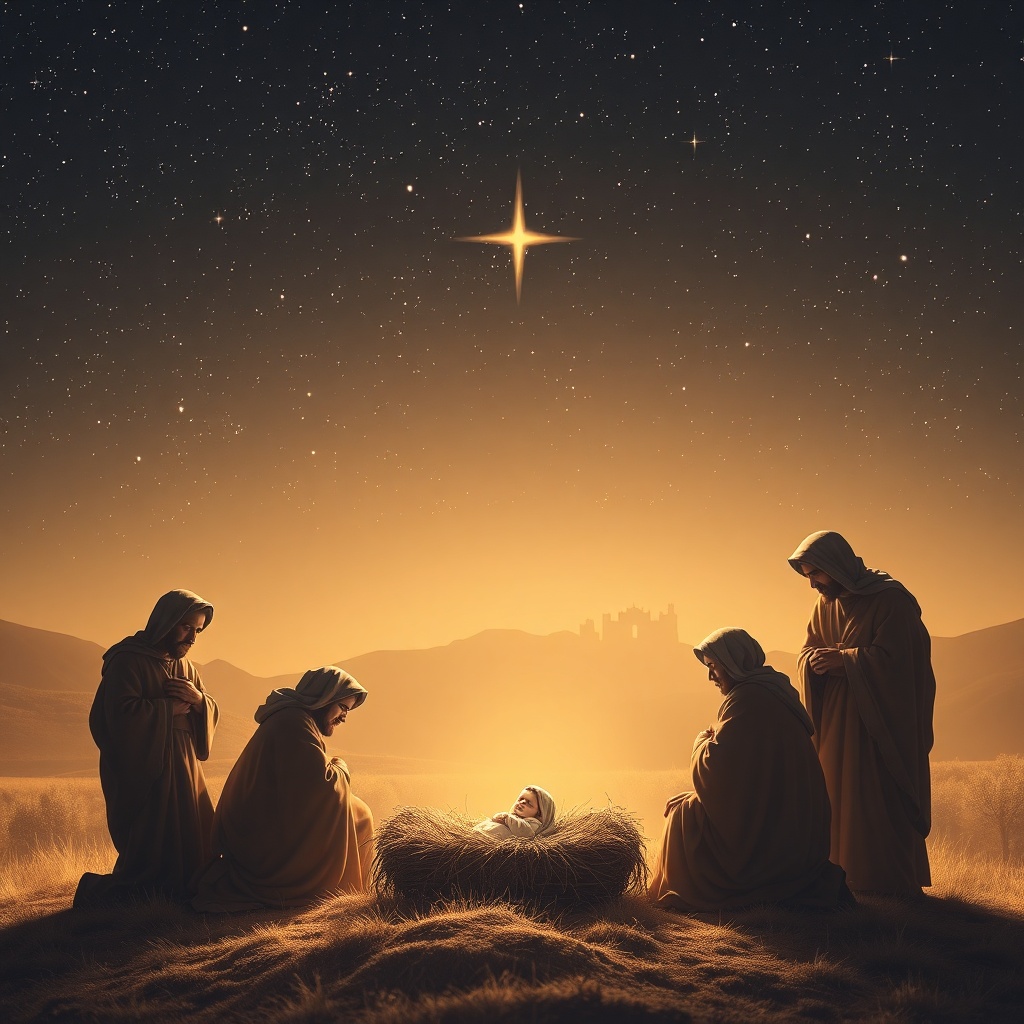Our Story Continues
Thank you for being a part of this journey. Today, we read Luke chapters 2 and 3—verses that recount the birth of Jesus Christ, the most significant event in human history. This story has been told in movies, cartoons, songs, and every medium imaginable. Even as an atheist, I knew this story. We decorate our homes, put on pageants, and stand in streets singing praises of this magnificent revelation: God came to live with us.
As Linus says in A Charlie Brown Christmas, “This is what Christmas is all about.” (1)
But here’s the problem: after we get over the awe of it, we cool off. Some even grow cold.
The Shepherds and the Season
Because the shepherds were still in the fields, likely just outside Bethlehem, it implies a mild winter or perhaps late fall (Luke 2:8). What happened to them in that field was so amazing that they left their sheep—their sole responsibility—and rushed to town to see the child. When they saw Him, they told everyone what they had seen, and we read that Mary “treasured up all these things and pondered them in her heart” (Luke 2:18–19).
You’d think that after being visited by an angel (Luke 1:26–38), conceiving while still a virgin, and hearing Elizabeth’s prophetic words (Luke 1:41–45), these comments from shepherds would feel anticlimactic. Scripture doesn’t mention Joseph’s reaction. Mary had just given birth—exhausted, overwhelmed with joy. Her response was likely all she could manage.
The Lamb and the Offering
They adhered to Jewish tradition, dedicating their firstborn son to God, just as Hannah had done with Samuel (Luke 2:22–23; 1 Samuel 1:24–28). The law required a lamb for the offering, but they gave two turtle doves instead (Luke 2:24), which tells us they were poor (Leviticus 12:8). Unbeknownst to many, they were offering the Lamb who would take away the sins of the world (John 1:29).
God didn’t choose the high, the affluent, or the powerful. He chose the holy. Though Joseph and Mary were of David’s lineage, they had never benefited from that heritage.
Simeon, Anna, and the Fingerprints of God
Simeon and Anna recognized Jesus without being told (Luke 2:25–38). We all know God, whether we accept Him—His fingerprints are on everything (Romans 1:20). Yet, Mary is still amazed as these progressive revelations unfold.
Before I wrote this, I wondered: how could Mary know all these things and still be amazed? As Jesus asked her when they found Him in the temple, “Didn’t you know I had to be in my Father’s house?” (Luke 2:49). It was easy to condemn Mary in her confusion. But as I write this, I’m convicted. I’ve known these truths my whole life. I believe them. Yet there are times I lose my amazement. I take them for granted. Like salvation itself, I act as if there’s no God watching over me. When challenges come, I try to face them alone—forgetting that He is, and always will be, with me.
Learning the Law and Living the Word
Jewish tradition, as recorded in the Mishnah, teaches that children begin learning Scripture at age five, study oral law by ten, and become responsible for the commandments at thirteen. (2) Jesus was ahead of that curve—asking and teaching the teachers in the temple at age twelve (Luke 2:46). Therefore, when asked what it takes to inherit eternal life, Jesus begins with the Law (Luke 10:25–28). That’s the Jewish tradition.
James reminds us that if we break even one law, we’re guilty of all (James 2:10). With man, this is impossible. But Jesus—fully man—kept the whole Law. That’s why He could make atonement for those of us who can’t, but who put our faith in Him who did.
Don’t Lose the Awe
It’s easy to fixate on the Christmas story. But we must not let it become too familiar. We must continue on—learning to live as He did, conforming to His image (Romans 8:29).
Footnotes
- A Charlie Brown Christmas, directed by Bill Melendez (CBS, 1965).
- Mishnah Avot 5:21, “Five years old for Scripture, ten for Mishnah, thirteen for the commandments.” See also Josephus, Antiquities 12.4.5 and Theodotus Inscription (1st century CE).

